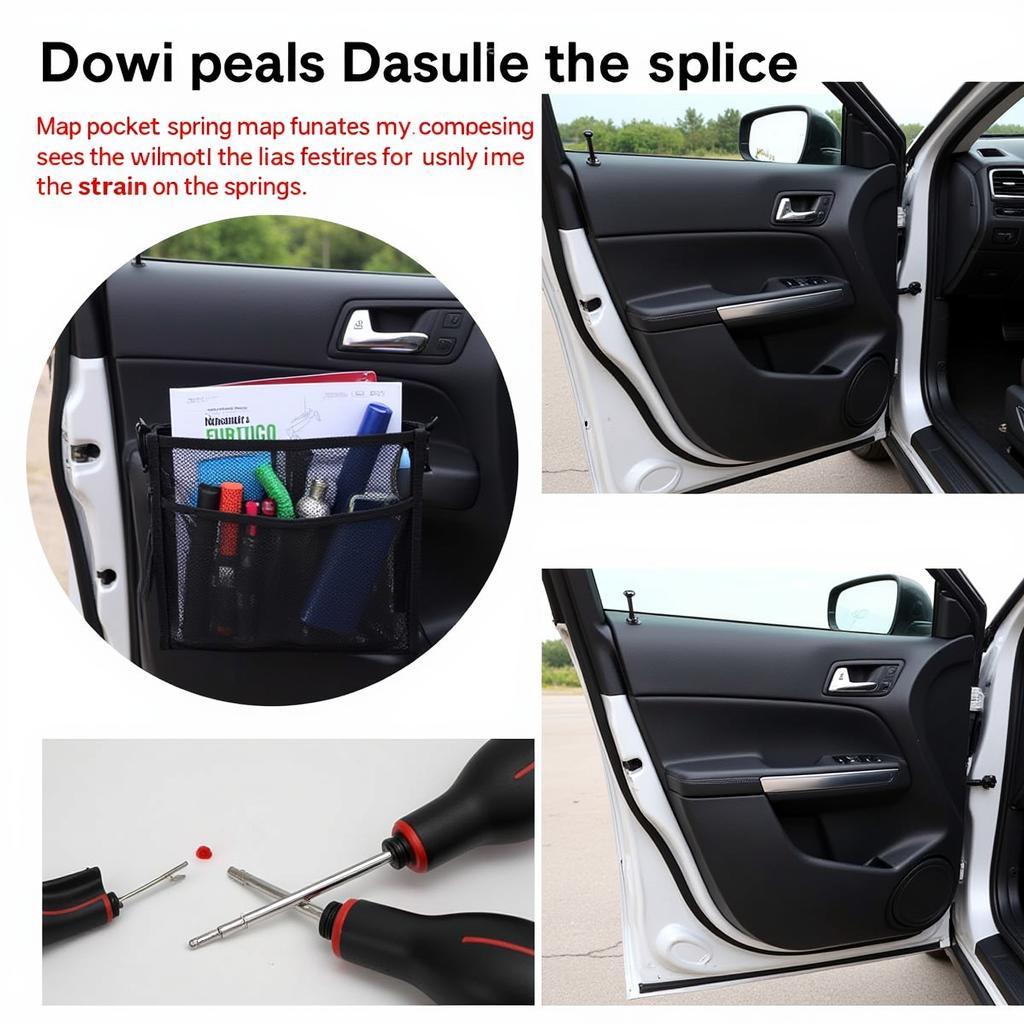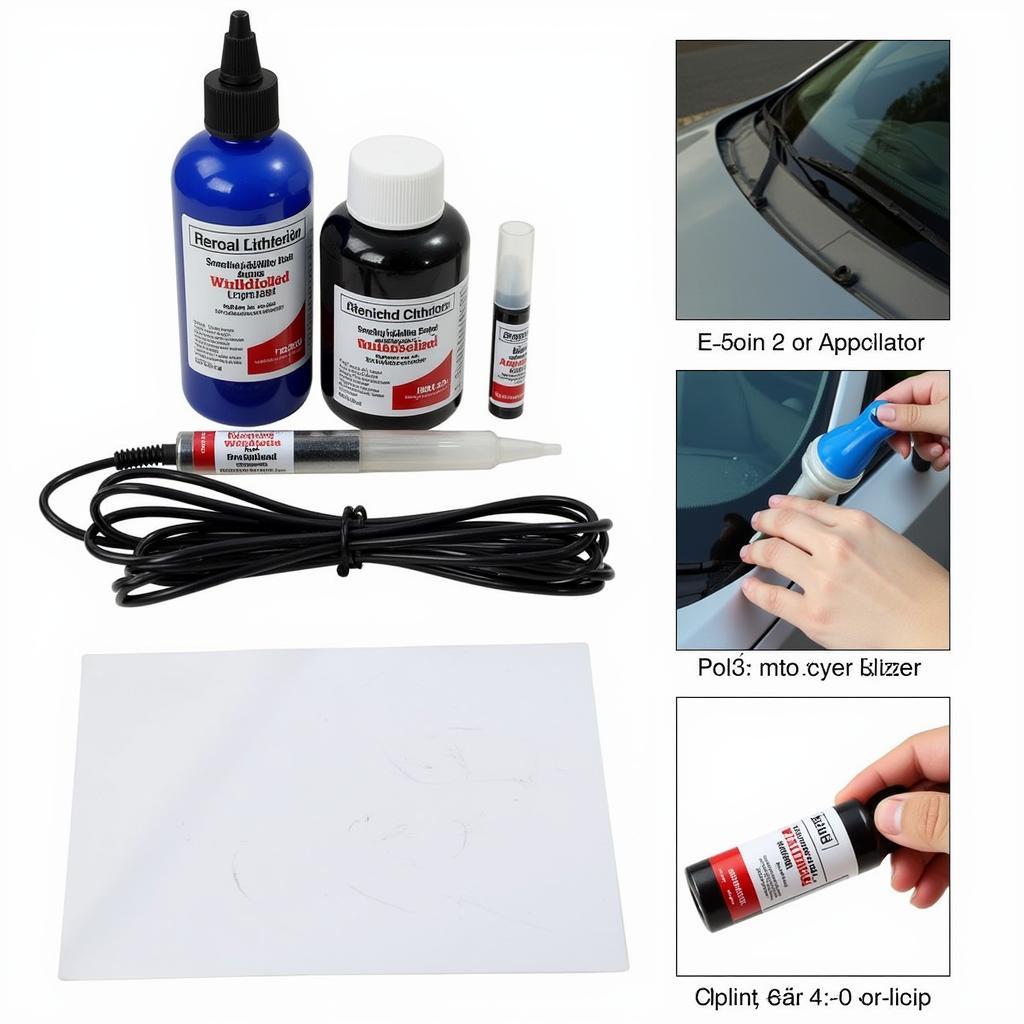A ripped car seat can be an eyesore and a discomfort. Whether it’s a small tear or a major gash, knowing how to fix a ripped seat in car is a valuable skill. This guide provides comprehensive steps and expert advice to help you restore your car’s interior to its former glory.
Can a ripped car seat be fixed easily? Yes, with the right tools and a little patience, most ripped car seats can be repaired effectively at home. Let’s dive into the details of how to tackle this common car interior issue. can you use your insurance to fix your car might be an option depending on your policy.
Understanding the Rip
Before you start, assess the damage. Is it a small tear, a seam separation, or a large rip with exposed foam? The type of rip will dictate the best repair method. Identify the material of your car seat – leather, vinyl, or cloth – as each requires a different approach.
Gathering Your Supplies
Having the right tools and materials is crucial for a successful repair. Here’s what you’ll typically need:
- Repair Kit: A car upholstery repair kit is a good starting point, especially for beginners. These kits usually contain adhesive, patches, filler, and color-matching tools.
- Matching Fabric/Leather: If you’re not using a kit, source fabric or leather that closely matches your car seat.
- Scissors: Sharp scissors are essential for clean cuts and trimming.
- Adhesive: Choose an adhesive specifically designed for automotive upholstery.
- Filler (if needed): For larger rips, a foam or fabric filler helps restore the seat’s shape.
- Needles and Thread (for cloth seats): If you’re sewing a cloth seat, use heavy-duty thread that matches the upholstery.
Repairing a Ripped Leather or Vinyl Seat
Leather and vinyl require similar repair techniques. Using a leather or vinyl repair kit simplifies the process. Follow these steps:
- Clean the Area: Thoroughly clean the ripped area and surrounding surface with a suitable cleaner.
- Apply the Patch (if using): If the rip is substantial, apply the patch from the kit underneath the tear, ensuring it aligns properly.
- Fill the Gap (if needed): If there’s exposed foam or a significant indentation, use the filler provided in the kit to level the surface.
- Apply the Adhesive: Apply the adhesive to the patch or directly to the ripped edges if not using a patch.
- Smooth the Surface: Gently press the edges of the rip together, ensuring a smooth and even finish.
- Apply the Colorant (if needed): If the repair is noticeable, use the colorant provided in the kit to blend the repaired area with the surrounding material.
Repairing a Ripped Cloth Seat
Repairing a cloth seat often involves stitching or patching. If the rip is along a seam, restitching it is the ideal solution. For tears, patching is the preferred method:
- Clean the Area: Clean the ripped area with a fabric cleaner.
- Prepare the Patch: Cut a patch slightly larger than the rip from matching fabric.
- Apply the Patch: Place the patch underneath the rip, ensuring it’s aligned correctly.
- Sew or Glue: You can either sew the patch in place using a strong thread or use fabric adhesive.
- Secure the Edges: If using adhesive, ensure the edges of the patch are firmly glued down.
Considering best cars to buy and fix to sell can give you a good perspective on resale value after repairs like these.
Preventing Future Rips
Preventing rips is often easier than fixing them. Here are some tips:
- Regular Cleaning: Keep your seats clean to prevent dirt and grime from weakening the material.
- Conditioning (Leather/Vinyl): Regularly condition leather and vinyl seats to keep them supple and prevent cracking.
- Careful Entry and Exit: Avoid sliding in and out of the car with sharp objects in your pockets.
- Pet Protection: Use seat covers to protect your seats from pet claws and dander.
“Regular maintenance is key to a car’s longevity, and this applies to the interior as well,” says John Davis, a seasoned automotive technician with over 20 years of experience. “Addressing small rips promptly prevents them from becoming larger, more costly problems.”
Conclusion
Fixing a ripped car seat is a manageable task with the right approach. By following these steps and using the appropriate materials, you can restore your car’s interior and prevent further damage. Remember, a little preventative care goes a long way in maintaining the overall condition of your car. If you’re unsure about tackling this repair yourself, don’t hesitate to consult a professional upholsterer. For further assistance and expert advice, connect with us at AutoTipPro at +1 (641) 206-8880. Our office is located at 500 N St Mary’s St, San Antonio, TX 78205, United States. We’re here to help! Knowing how to fix a ripped seat in car can save you money and keep your car looking its best. can you fix a flooded car is another question we get often, and while a different issue, proper care can significantly increase a car’s lifespan. Perhaps you are wondering can i have the insurance pay to fixed my car? This depends on your individual policy and the cause of the damage. If you’re facing damage after a car runs into fixer upper house, insurance will likely be involved, and understanding your coverage is essential.







Leave a Reply